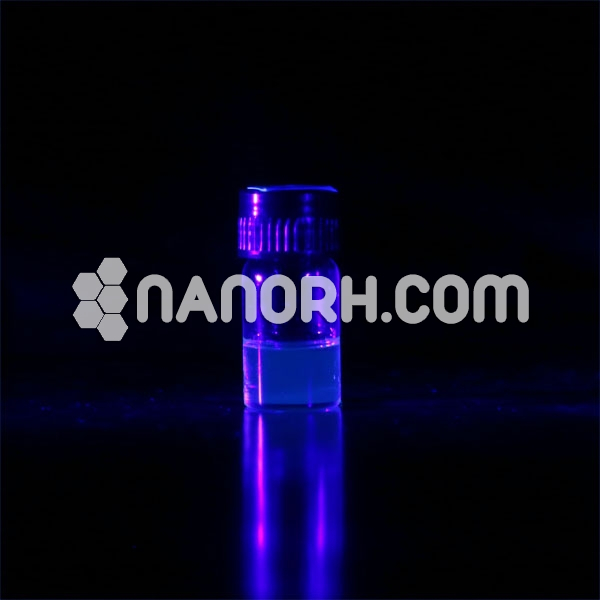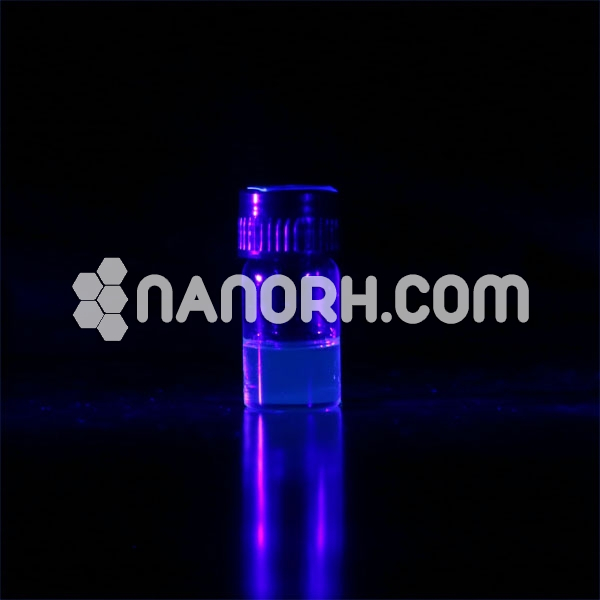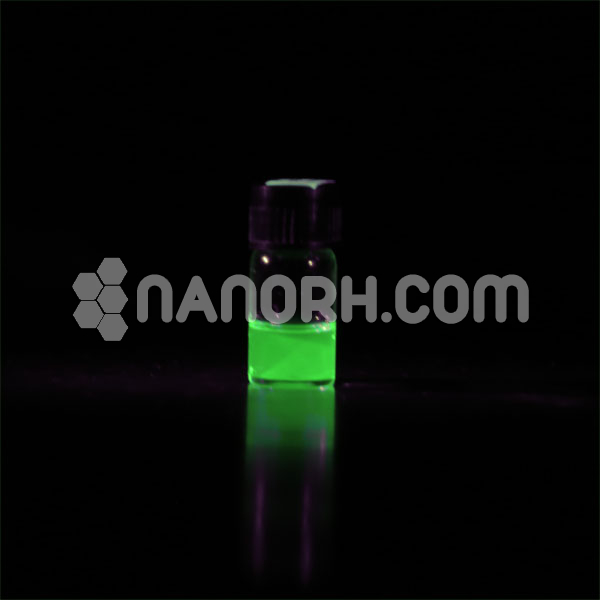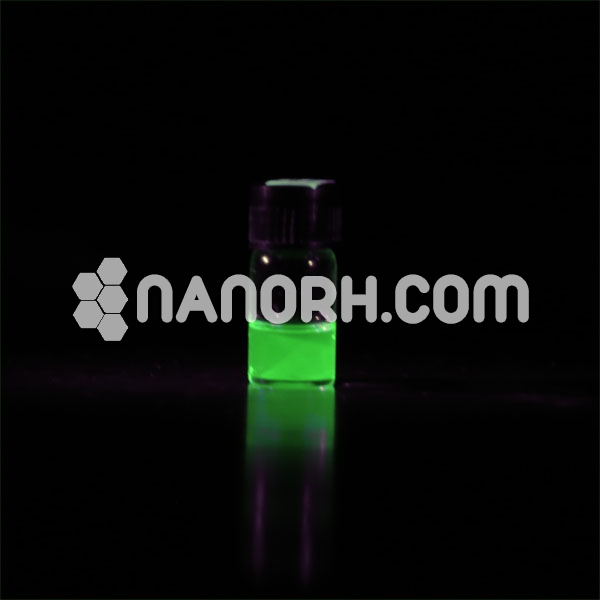CdS/ZnS core-shell type quantum dots oleic acid functionalized, fluorescence λem 425 nm, 5 mg/mL in toluene
Highly purified CdS/ZnS quantum dots with oleic acid surface ligand contain extremely low free organic ligands and impurities. They are well suited for display, solid state lighting, and solar cell applications. They can be used as electroluminescence emitter in quantum dots based LEDs or embedded in polymer matrix as the backlight of LCD display. CdSe/ZnS quantum dots in solid form can be dispersed in most non-polar organic solvents such as toluene, chloroform, and hexane
| CdS/ZnS core-shell type quantum dots | |
| Product No. | NRE-21004 |
| Concentration | 5mg/ml |
| Purity | 99.9% |
| Formula | CdS/ZnS |
| Florescence | Λem 425nm |
| APS | <10nm |
| Solvent | Toluene |
| Quantum Yield | 40-80% |
| FWHM | <30nm |
| Form | Liquid |
CdS/ZnS core-shell type quantum dots




